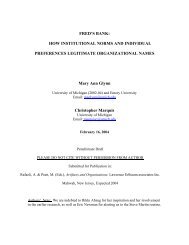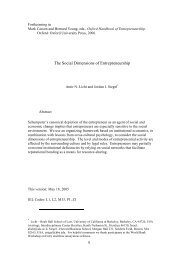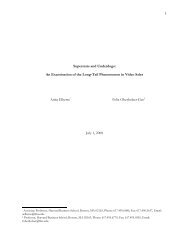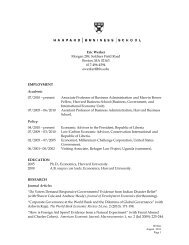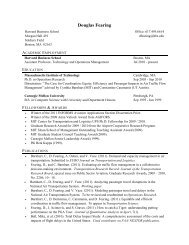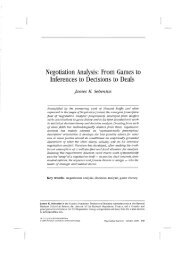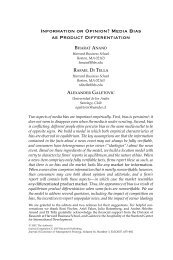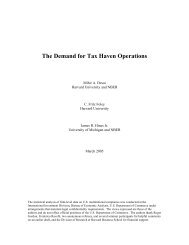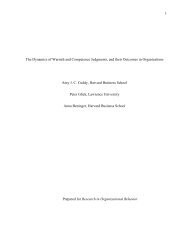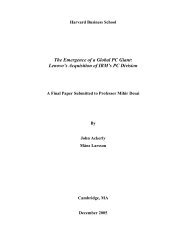A Note on Valuation Models: CCFs vs. APV vs WACC - Harvard ...
A Note on Valuation Models: CCFs vs. APV vs WACC - Harvard ...
A Note on Valuation Models: CCFs vs. APV vs WACC - Harvard ...
You also want an ePaper? Increase the reach of your titles
YUMPU automatically turns print PDFs into web optimized ePapers that Google loves.
Table 4: CCF Valuati<strong>on</strong> (in €)<br />
Year 1 Year 2 Year 3 Year 4 Year 5<br />
EBIT 100,000 105,000 110,250 115,763 121,551<br />
- Taxes <strong>on</strong> EBIT (40,000) (42,000) (44,100) (46,305) (48,620)<br />
= EBIAT 60,000 63,000 66,150 69,458 72,930<br />
+ Depreciati<strong>on</strong> 50,000 50,000 50,000 50,000 50,000<br />
- Capex (60,000) (60,000) (60,000) (60,000) (60,000)<br />
- Increase in NWC (10,000) (10,000) (10,000) (10,000) (10,000)<br />
+ Interest tax Shield 3,120 1,490 710 338 160<br />
= CCF 43,120 44,490 46,860 49,795 53,090<br />
Return <strong>on</strong> Assets 13.4% 13.4% 13.4% 13.4% 13.4%<br />
Discount Factor 0.88 0.78 0.69 0.60 0.53<br />
PV 38,025 34,597 32,134 30,112 28,311<br />
Firm Value 163,178<br />
C<strong>on</strong>clusi<strong>on</strong>s<br />
The three enterprise valuati<strong>on</strong> techniques c<strong>on</strong>sidered in this paper are different in the way they<br />
treat interest tax shields. However we have seen that the <strong>WACC</strong> approach and the CCF approach<br />
are identical and that under certain assumpti<strong>on</strong>s the <strong>APV</strong> approach also yields the same<br />
valuati<strong>on</strong>. The <strong>WACC</strong> approach is easy to use and efficient when the assumpti<strong>on</strong> that capital<br />
structure will not change in the future can be made (D/V= c<strong>on</strong>stant). If debt level is forecasted to<br />
remain c<strong>on</strong>stant in absolute term (D=c<strong>on</strong>stant), the <strong>APV</strong> approach should be used discounting<br />
the interest tax shield at the cost of debt. Finally the CCF approach is the appropriate and most<br />
efficient approach when forecasted debt levels imply a change in capital structure. In this case it<br />
is also equivalent to the <strong>APV</strong> approach discounting the interest tax shield at the return <strong>on</strong> assets.<br />
Fabrice Bienfait IFM Final Paper Page 7 of 8



